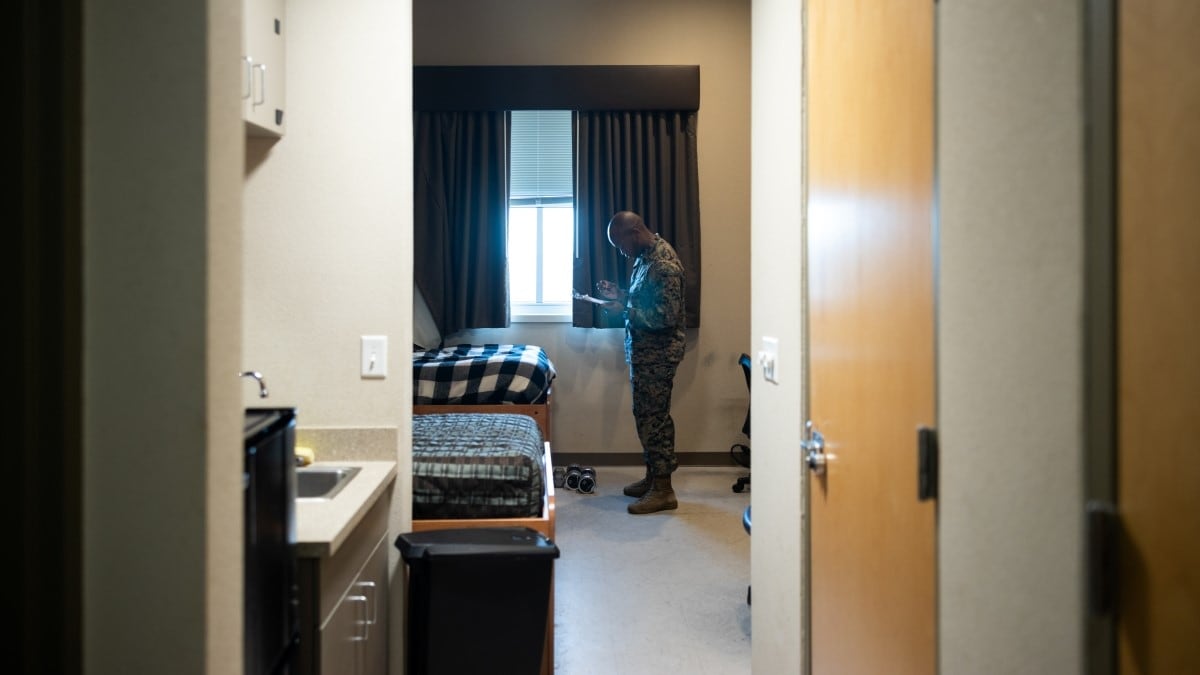Improving barracks conditions and investing in personnel quality of life is paramount to maintaining Marine Corps readiness, service leaders said Tuesday at a Washington defense conference.
Panelists at Modern Day Marine — including Lt. Gen. James Adams III, Maj. Gen. Ryan Rideout, and Maj. Gen. Jason Woodworth — vowed to forge ahead with the massive Barracks 2030 overhaul in order to fix dilapidated Marine Corps housing.
“The idea is not to fix it and forget it,” Adams said. “It’s to fix it correctly and then maintain it, because, quite frankly, we got ourselves into the position we’re in now because we didn’t fix it and we did forget it.”
Barracks 2030, announced in early 2024 with a target completion date of 2037, is a nearly $11 billion overhaul of Marine Corps barracks that primarily house unmarried troops. The plan promises to repair rooms, update furniture and professionalize housing management.
Marine Corps barracks have come under fire in years past for documented problems with mold, broken appliances and vermin.
Adams said Barracks 2030 sat firmly at the top of the Marine Corps Commandant’s unfunded priority list, which is a wishlist of necessities that fall outside of the service’s budget.
The program doesn’t officially start until 2026, Woodworth clarified, so a portion of the renovations and revamping won’t apply to service members leaving before then. However, the Marine Corps had already installed new furniture in 109 buildings since the program was announced and spent about $125 million in 2024 on renovation and repairs, according to Woodworth.
RELATED
It was revealed at Modern Day Marine that the renovation plan had run into a slight hitch, but the goal remained the same.
Leaders agreed the investments were desperately needed to revive the declining conditions of the housing facilities.
“I grew up — my first duty station was Camp Pendleton back a couple years ago — and I didn’t even recognize Mainside because the buildings and facilities had fallen into such disrepair,” Adams said.
But he had reason to be optimistic.
When Adams met with new Deputy Secretary of Defense Steve Feinberg, he said he expected Feinberg to focus on designs and weapons systems.
Instead, he went a different route.
“He wanted to talk about Barracks 2030,” Adams said.
Demolition would also be an integral part of the 2030 initiative, particularly for cost-saving measures.
Woodworth pointed out that the service currently had enough barracks to accommodate about 200,000 Marines from the 2012 era when the service was growing. But he said they needed to scale that down to align with the smaller service size of 2025, which he said was closer to 175,000 troops.
The price of maintaining those rooms — even unoccupied ones — tallied close to $2,500 per year for keeping on power, lights, water and fire systems, among other costs.
“We really need to be very focused on taking down as much as we put up,” Woodworth said.
Riley Ceder is a reporter at Military Times, where he covers breaking news, criminal justice, investigations, and cyber. He previously worked as an investigative practicum student at The Washington Post, where he contributed to the Abused by the Badge investigation.
Read the full article here


